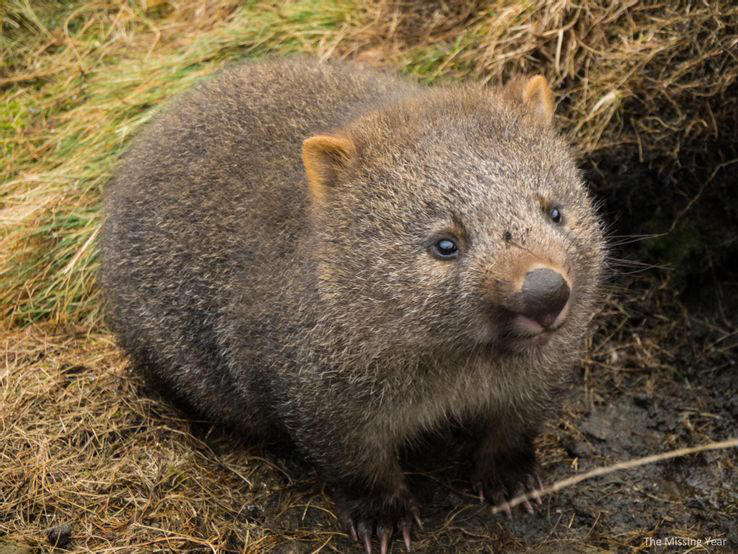Wombat Poop Cubes: These cute animals have this unique characteristics that make them really special
Have you ever wondered about the strange cube-shaped feces produced by wombats? As strange as it may seem, this peculiar adaptation plays a crucial role in the survival of these unique marsupials. In this blog post, we will uncover the mystery of wombat poop and explore the science behind this fascinating phenomenon.
First, let’s take a closer look at the animal itself. Wombats are marsupials that are native to Australia. They have a compact and sturdy body, with short legs and a large head. They have thick, dark brown fur that is often described as being coarse to the touch. Wombats have a broad, flattened nose and small ears that are often obscured by their fur. They have strong jaws and large incisors that they use to chew on tough vegetation. They have strong, clawed feet that are well adapted for digging burrows. Adult wombats typically weigh between 25 to 35 kg and are about 1 meter long. They have a stocky and low-slung body which makes them well adapted to their burrowing lifestyle.
Now, let’s delve into the science behind the wombat poop. The cube shape of wombat feces is a result of their diet and their digestive system. Wombats primarily eat tough vegetation such as grasses, roots, and bark, which can be difficult to digest. To make it easier to pass through their digestive tract, their feces are formed into a cube shape, which allows them to be stacked up and marked their territory. This cube shape also helps to reduce the amount of surface area exposed to the elements, which helps to prevent the feces from drying out and breaking apart.
But, wombats aren’t just known for their strange feces, they also have unique behavior.

Wombats are generally not considered to be aggressive animals, but they can become defensive or territorial if they feel threatened. They are known to be solitary animals and will often retreat into their burrows if they sense danger. However, if a wombat feels cornered or trapped, it may become aggressive and use its strong jaws and sharp incisors to defend itself. They can also be territorial and may defend their burrows or territory from other wombats or animals.
Want to know more? Here are some fun facts about wombats and their poop:
Fun fact about wombats
- Wombats are the only known animal to produce cube-shaped feces.
- Wombats have strong jaws and incisors that they use to chew on tough vegetation.
- Wombats are marsupials, which means that they carry their young in a pouch.
- Wombats are slow-moving animals and can reach speeds of up to 25 km/h when they need to, but they usually move at a leisurely pace.
- Wombats have strong and sturdy body, they can weigh up to 35 kg, and are able to withstand physical force like being hit by a car or falling from cliffs.
- Wombats have strong, clawed feet that are well adapted for digging burrows, which can be up to 30 meters long and can have multiple entrances and exits.
- Wombats are solitary animals and are active mainly at night, they are herbivores and eat mostly grasses, roots, and bark.
- Wombats have a very low water intake and can survive long periods of drought by conserving body moisture.
- Wombats have a lifespan of around 5 to 6 years in the wild, but can live up to 15 years in captivity.
‘Using histology and traction tests, we found that the cross section of the intestine exhibits regions with a two-fold increase in thickness and a four-fold increase in stiffness, which, we hypothesize, facilitates the formation of corners by contractions of the intestine. ‘Surprisingly, the team did not stop there. They went ahead and created a mathematical model to simulate the passage of poop as it moves through the system.

Frequently Asked Questions:
Wombats are generally not considered to be aggressive animals, but they can become defensive or territorial if they feel threatened.
The cube shape of wombat feces is a result of their diet and their digestive system. Wombats primarily eat tough vegetation such as grasses, roots, and bark, which can be difficult to digest. To make it easier to pass through their digestive tract, their feces are formed into a cube shape, which allows them to be stacked up and marked their territory.
Adult wombats typically weigh between 25 to 35 kg and are about 1 meter long.
Wombats are herbivores and primarily eat tough vegetation such as grasses, roots, and bark.
Wombats have a lifespan of around 5 to 6 years in the wild, but can live up to 15 years in captivity.
In conclusion, wombats are unique marsupials that have a number of fascinating adaptations, including their ability to produce cube-shaped feces. By understanding the science behind this phenomenon and the behavior of these animals, we can gain a deeper appreciation for the diversity of life on our planet. The peculiar characteristic of the cube shape poop of the wombat, makes it a subject that is interesting to study and has a great impact on the ecosystem where it lives. By understanding more about wombats and their behavior, we can work towards preserving these amazing animals for future generations.




